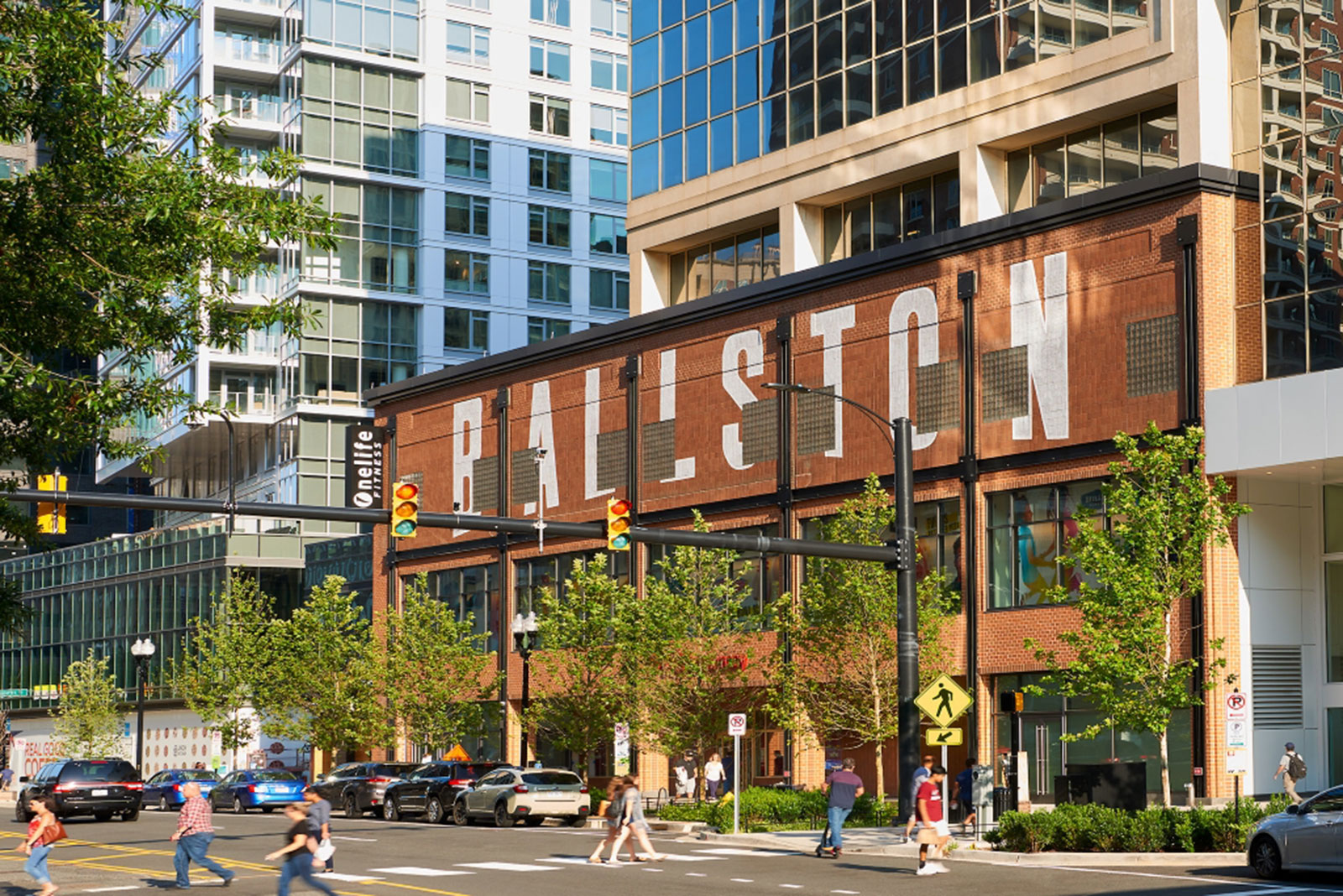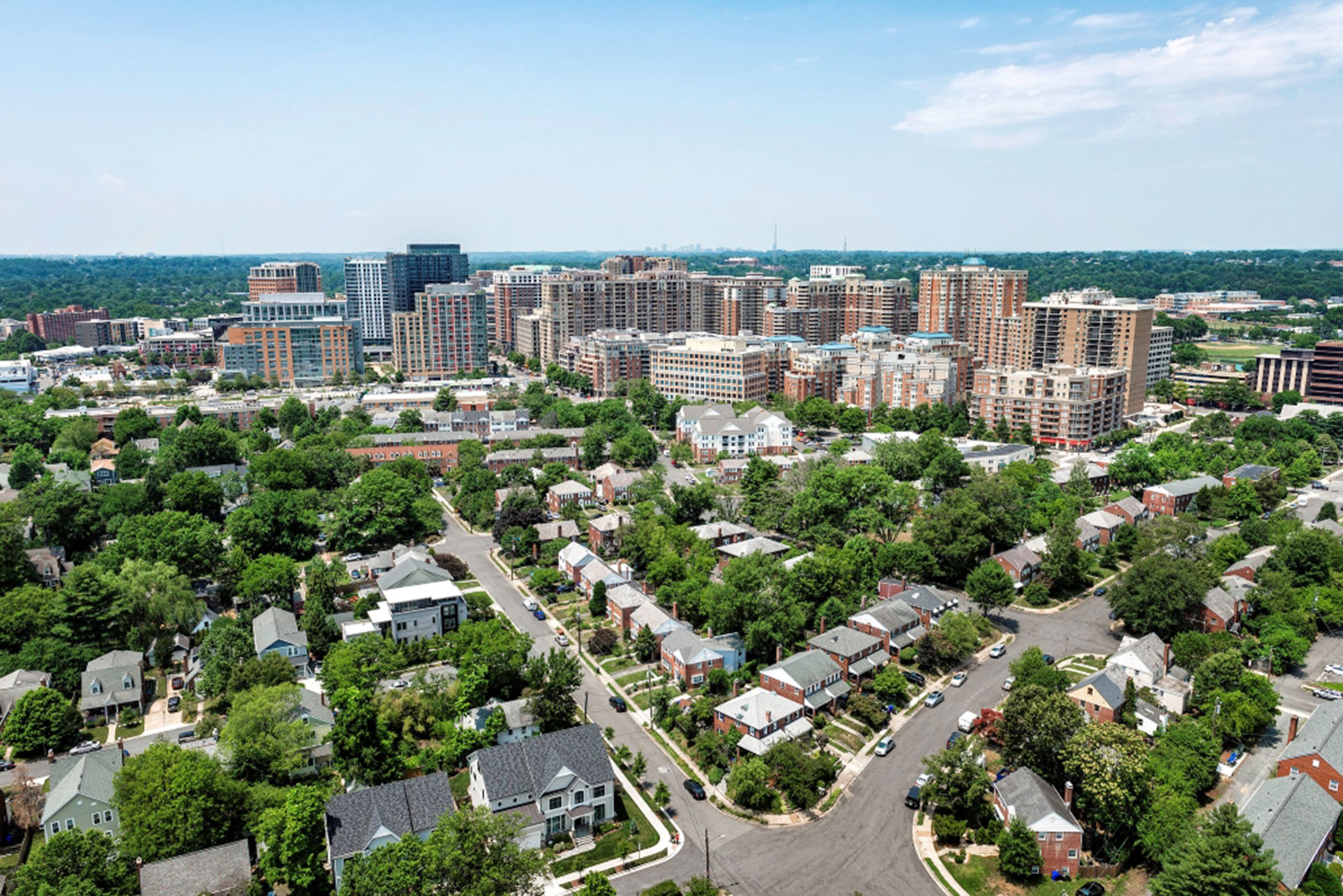This article was written by Alex Taylor, Senior Business Development Manager for Arlington Economic Development.
Arlington Economic Development recently hosted a webinar on the future of Ballston, Arlington’s Bold Future: Innovating Ballston, featuring panelists from Shooshan Companies, George Mason University, Cushman & Wakefield, the Ballston BID and Arlington County. This was the first in a series of webinars focused on the future of Arlington’s economy and placemaking.
As home to DARPA, the Office of Naval Research and the Virginia Tech Research Center, Ballston has historically been a hub of innovation. Funded by federal research grants and commercialized spinoffs, the cutting-edge research happening in Ballston has led to technological advancements around the world as well as an influx of talent, ranking Arlington County amongst the most educated and hardest working populations in the country.
While companies have long been drawn to Ballston for its high-quality office space, prominent federal research institutions, university presence and access to tech and professional talent, the major transformation in Ballston has created a bustling 18/7 environment despite the ongoing pandemic.
The neighborhood has emerged as a more vibrant residential neighborhood with the addition of 2,000 new residential units over the last three years. These developments sit among thousands of existing residential properties, millions of square feet of high-end office space, and the experiential entertainment derived from over $300 million in investments between Ballston Quarter and Ballston Exchange.
Ballston also sits on top of one of the busiest metro stations in the region, with rail access on the Silver and Orange lines connecting workers and residents to D.C., Maryland and western suburban nodes like Ashburn, Reston and Vienna in Virginia. It will soon have direct access to two major airports (Reagan National and Dulles, coming in 2021), making domestic and international connections seamless.
Hundreds of miles of pedestrian and bicycle paths stretch across the region and allow for active commuters to run, bike or walk to the office. This combination of assets gives Ballston and Arlington a truly unmatched environment compared to other commercial districts around the country.
While Ballston is already a top-tier commercial district, it has experienced significant change over the last few years with many exciting new projects in the pipeline. The neighborhood will be welcoming George Mason University’s new Institute for Digital InnovAtion (IDIA), and the $250 million state and University investment in the IDIA will serve as a critical catalyst in accelerating the growing innovation district and high-tech ecosystem along the Rosslyn-Ballston corridor.
The 460,000 square foot facility will help support GMU’s new School of Computing, part of the University’s commitment to educate thousands of students in high-tech fields over the next decade. The building will incorporate cyber infrastructure and green technologies, and will support a mix of research, educational programs, corporate innovation labs, coworking and innovation programs for high-growth ventures.
This is all in addition to the $1 billion Virginia Tech Innovation Campus being simultaneously developed in Alexandria. Silicon Valley has Stanford, Atlanta has Georgia Tech, Boston has MIT and Harvard, and Arlington has GMU and neighboring Virginia Tech; the future for Ballston’s tech ecosystem is certainly bright.
Federal innovation has attracted talent to the D.C. metro region for decades, but the emergence of these high-tech university research facilities along with Amazon’s HQ2 project will create a tech talent pipeline that will bolster the region’s image as a tech hub and further place Arlington on the map as a preeminent global tech and innovation hub.



